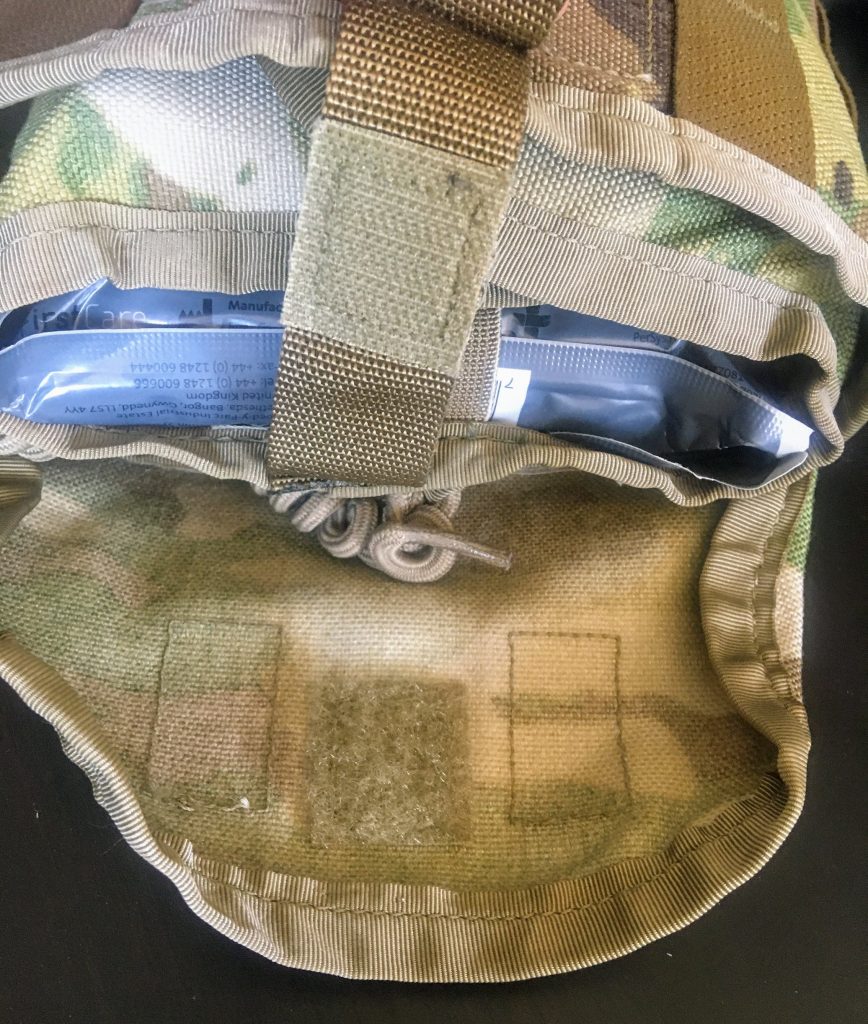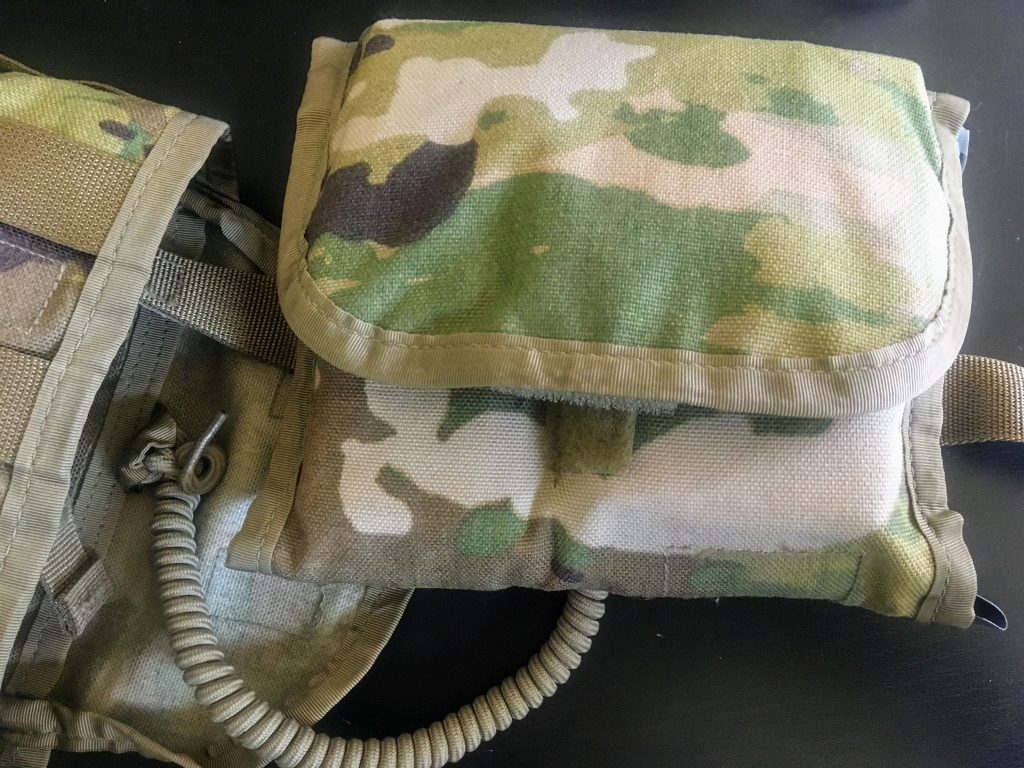
With apologies to Bill Murray and the writers from Stripes.
This, specifically, is a US Army IFAK II pouch – in OCP (totally-not-Multicam, it’s a whole thing, go read up if you are unfamiliar).
It does not have the usual tourniquet pouch to go along with it, but I filled it with what I thought should go in it, and then I figured I’d compare notes to what the Army actually puts in one.
Turns out, I’m not terribly far off – bear in mind, the contents for the official list that follows here is aimed at an Army grunt for self or buddy aid; there’s perhaps not a ton of training they receive on this stuff, but it’s definitely a nonzero number of hours. Remember, train.
US Army IFAK 2 Contents
- 1 Tourniquet, Combat Application (C.A.T.) & pouch
- 1 Bandage Kit (Israeli Bandage)
- 1 Bandage, Gauze
- 2 Chest Seals
- 1 Mini-Sharpie
- 1 Eye Shield
- 1 Combat Medic Reinforcement Tape
- 1 Airway, Nasopharyngeal (NPA)
- 2 Pair gloves
- 1 Tactical Combat Casualty Card
- 1 Gerber Strap Cutter
So, bear in mind the target audience for this – every soldier on the battlefield has one of these kits on his or her person (theoretically), and has received some level of training on each item.
None of this is rocket science – I firmly believe that anyone could use any of this stuff with some careful study and a bit of basic education (more on this to come).
Before I go in to my personal kit, let me break down the bag itself – it’s actually two pouches, one inside the other.

Closest to the camera, you can see the “ribbed” pull tab – there’s one on each side, with the intent that this pouch is mounted on the user’s low back, with the tabs allowing for deployment from either side.

This bit of Velcro holds the inner pouch in place in the event the outer pouch flaps open. Note the coil of elastic “dummy cord” (so called because it keeps you from dropping the inner pouch. Like a dummy).

Now we have the inner pouch removed from the confines of the outer pouch – you can see the dummy cord more clearly here, and note that if this was in actual use, you’d have to pull the inner pouch around to your front, leaving the outer pouch attached by MOLLE webbing behind you.

This is a little “bonus” pouch inside the outer pouch – some suggest chest seals or casualty tags could go here. I chose to leave it empty, because if I’m going to have something left at the small of my back, I don’t want that something to be anything I’ll need in a hurry. You know, like a chest seal…

Here’s the inner pouch all opened up – you’ll note nothing can fly out, it’s all retained by elastic or pockets. Idiot resistant.
Now, bear in mind I’m a paramedic, but I kitted this particular specimen out as I wanted to see it – the bag was all I got, I had to get all the contents myself. Don’t put stuff in because I did – that’s an awful idea for a number of reasons – but first and foremost, don’t put anything in you don’t know how to use.
- 1 Tourniquet, SOF-T Wide (my preference over CAT, stored elsewhere)
- 1 Bandage Kit (The Emergency Bandage – my preference is an Olaes, which would also cover the eye cup I’m missing)
- 1 Bandage, Gauze (square packed)
- 2 Chest Seals (pair, HALO)
- 1 Mini-Sharpie
- 1 Airway, Nasopharyngeal (NPA)
- 2 Pair gloves
- 1 Pack QuikClot Combat Gauze (Z fold)
- 2 14ga decompression needles (10ga is even better – citation)
- 1 Space blanket (casualty heat retention is massively important – 3 citations)
I’ll get in to the what and the why in another post of some of the specific items I prefer, but that’s my IFAK load-out. Now, bear in mind, I’m operating under different assumptions and with different skillsets than the standard soldier is, and than you are for that matter – selections like what’s in this IFAK are a huge part of why I harp on training so hard.
If you don’t know the hows and the whys of what you’re carrying, it’s impossible to make rational gear choices, and you’ll end up with too much stuff, the absolute wrong stuff, or you’ll be missing a key item you need.
I’m working on putting some content together in regards to training and education, but if you want some seriously high quality training, look at Lone Star Medics or Dark Angel Medical – these companies are both run by excellent people with years of experience in tactical and trauma care, and you simply cannot go wrong with either one.
Now, to circle back to the pouch itself, if you can find one inexpensively on the secondary market and want to carry your IFAK at the small of your back, I’d say it’s a great option.
However, I wouldn’t recommend it for really anywhere else on your person, I suspect deployment would just be awkward. Although, you could probably repurpose the inner pouch to go inside a different bag, like this one:

That inner pouch with retention (elastic/pouches) is so key to effective use of the IFAK – as anyone with any EMS experience can tell you, items in a bag not actively retained are lost. Usually immediately prior to an urgent need for said item. Mr. Murphy is alive and well in EMS.
-T